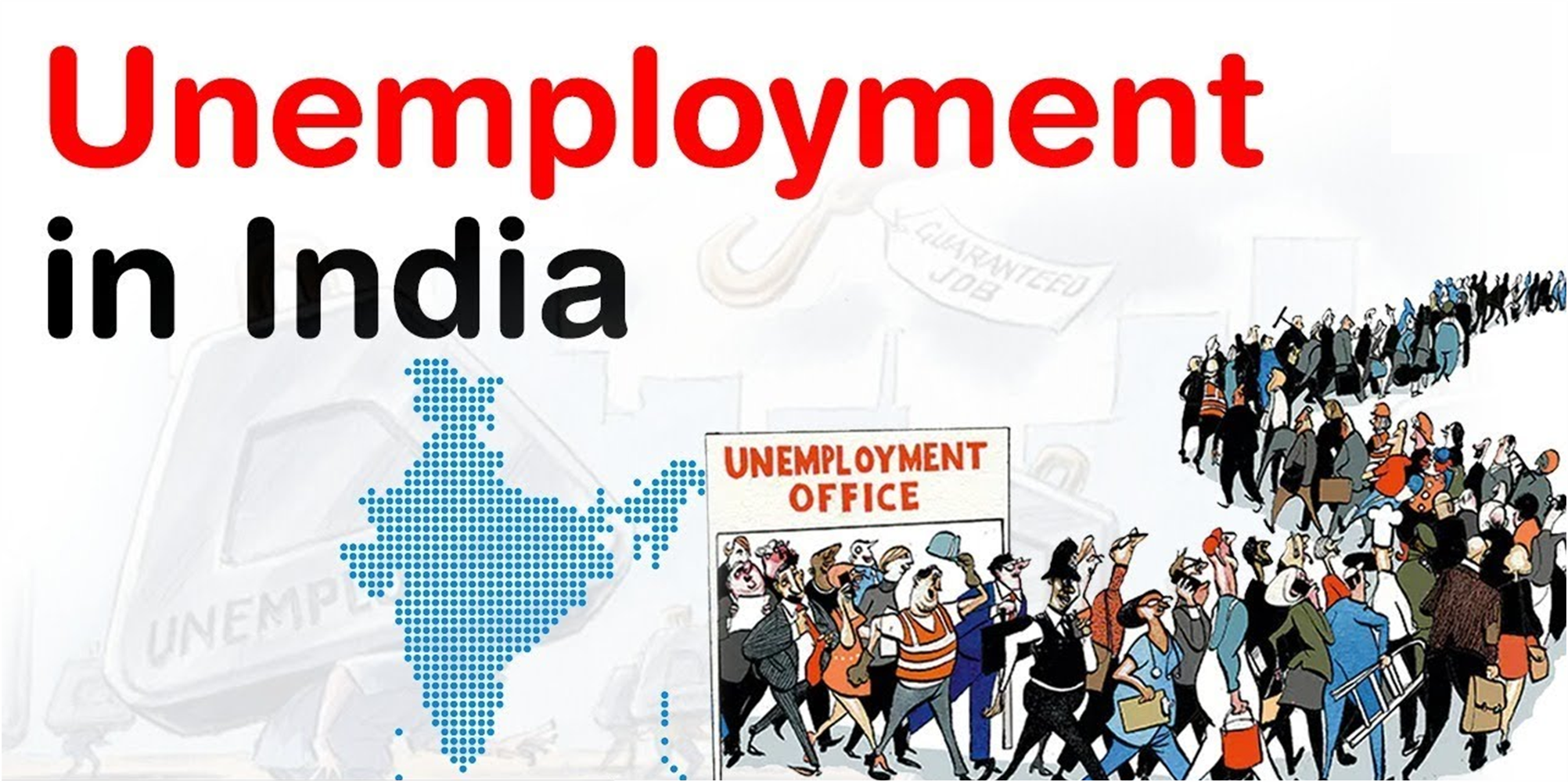- Courses
- GS Full Course 1 Year
- GS Full Course 2 Year
- GS Full Course 3 Year
- GS Full Course Till Selection
- Online Program
- GS Recorded Course
- NCERT (Recorded 500+ Hours)
- Polity Recorded Course
- Geography Recorded Course
- Economy Recorded Course
- AMAC Recorded Course
- Modern India, Post Independence & World History
- Environment Recoded Course
- Governance Recoded Course
- Science & Tech. Recoded Course
- International Relations and Internal Security Recorded Course
- Disaster Management Module Course
- Ethics Recoded Course
- Essay Recoded Course
- Current Affairs Recoded Course
- CSAT
- 5 LAYERED ARJUNA Mentorship
- Public Administration Optional
- ABOUT US
- OUR TOPPERS
- TEST SERIES
- FREE STUDY MATERIAL
- VIDEOS
- CONTACT US
Unemployment in India
Unemployment in India

Unemployment in India
Why in News?
Recently, the National Statistical Office (NSO) has released the Periodic Labour Force Survey (PLFS).
- The unemployment rate in urban areas for persons aged above 15 has decreased to 7.2% in July-September 2022 from 9.8% in July-September 2021.
About Unemployment:
- Unemployment occurs when a person who is actively searching for employment is unable to find work.
- Unemployment can be used to analyse the health of the economy.
- Employment and Unemployment are defined by NSO, on the basis of the following activities of an individual:
- Working (engaged in an economic activity) i.e., 'Employed'.
- Seeking or available for work i.e., 'Unemployed'.
- Neither seeking nor available for work.
- The labour force= a + c
- Unemployment rate is the percent of the labour force that is without work.
- Unemployment rate = (Unemployed Workers / Total labour force) × 100.
Types of Unemployment:
- Disguised Unemployment: It is a situation where more people are employed than actually needed to do a particular work. It is mostly found in agriculture.
- Seasonal Unemployment: It occurs during certain seasons of the year, like agricultural labourers in India rarely get work throughout the year.
- Structural Unemployment: It occur because of mismatch between the jobs available in the market and the skills of the available workers in the market.
- Cyclical Unemployment: It is a result of the business cycle, where unemployment rises during recession (it is a period of weak or negative growth in GDP) and declines with the increase of economic growth.

- Technological Unemployment: It’s a kind of unemployment which occurs because of change in technology.
[In 2016, World Bank data has estimated that 70% jobs in India are in danger because of automation.]
- Frictional Unemployment: It’s also known as search unemployment.
It is the time gap between the 2 Jobs of an Individual i.e., when he left his last job and the day on which he is starting the new job.
[It is often considered voluntary unemployment because it is not caused due to the shortage of jobs but in fact, the worker himself quit his job in search of better opportunities.]
- Vulnerable Employment: This is the job without proper job contracts and thus don’t have any legal protection. These persons are considered ‘unemployed’ because records of their work are not maintained.
What is the Periodic Labour Force Survey?
- It is a periodic survey to collect the data on the labour force data.
- It was launched by National Statistical Office (NSO), Ministry of Statistics & Programme Implementation in April 2017.
- The PLFS has 2 objectives:
- To estimate the key employment and unemployment indicators in the short time interval of 3 months.
- To estimate employment and unemployment indicators in both rural and urban areas annually.
What are the Key Findings of the PLFS (July-September 2022)?
|
Parameters |
Definition |
July-Sept (2021) |
July-Sept (2022) |
|
Unemployment Ratio
|
The unemployment ratio is defined as the percentage of persons unemployed among the persons in the labour force.
|
9.3% for men and 11.6% for women |
6.6% for men & 9.4% for women |
|
Worker-Population Ratio (WPR)
|
The WPR is defined as the percentage of employed persons in the population.
|
66.6% for men and 17.6% for women.
|
Among men was 68.6% and 19.7% among women. |
|
Labour Force Participation Rate (LFPR):
|
It is the percentage of persons in the labour force who are working or seeking or available for work in urban areas and of age15 and above.
|
46.9%
73.5% for men and 19.9% for women. |
Increased to 47.9%
For men it was 73.4% and 21.7% for women |
What are the Major Causes of Unemployment in India?
- In India the caste stereotyping is one major issue in India as work is prohibited for specific castes in some areas.
- Also, in big joint families having big business, many persons of the family depend on the joint income of the family.
- Rapid Growth in population is also a big problem in India and has become one of the main causes of unemployment.
- Still in India nearly half of the workforce is dependent on Agriculture and don’t like to do job (Also, it provides seasonal employment)
- The industrial development had adverse effects on cottage and small industries.
- The production of cottage industries began to fall due to Industrial development which have resulted into many artisans becoming unemployed.
- Mobility of labour in India is low. Due to attachment to the family, people do not go too far off areas for jobs.
- Factors like language, religion, and climate are also responsible for low mobility.
- Jobs in the todays capitalist world have become highly specialised but India’s education system does not provide the right training and specialisation needed for these jobs.
- Lack of education is also an issue, there are many illiterate people who are willing to work but can’t due to lack of skills.
What are Government’s Initiatives to Curb Unemployment?
- Support for Marginalized Individuals for Livelihood and Enterprise (SMILE)
- PM-DAKSH (Pradhan Mantri Dakshta Aur Kushalta Sampann Hitgrahi)
- Mahatma Gandhi National Rural Employment Guarantee Act (MGNREGA)
- Pradhan Mantri Kaushal Vikas Yojana (PMKVY)
- Start Up India Scheme
- Rozgar Mela



